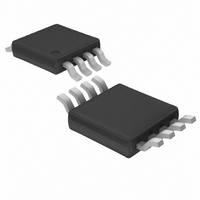LTC1966CMS8#TRPBF Linear Technology, LTC1966CMS8#TRPBF Datasheet - Page 21

LTC1966CMS8#TRPBF
Manufacturer Part Number
LTC1966CMS8#TRPBF
Description
IC PREC RMS/DC CONV MCRPWR 8MSOP
Manufacturer
Linear Technology
Specifications of LTC1966CMS8#TRPBF
Current - Supply
155µA
Voltage - Supply
2.7 V ~ 5.5 V
Mounting Type
Surface Mount
Package / Case
8-MSOP, Micro8™, 8-uMAX, 8-uSOP,
Lead Free Status / RoHS Status
Lead free / RoHS Compliant
Available stocks
Company
Part Number
Manufacturer
Quantity
Price
applicaTions inForMaTion
Although the settling times for the post filtered configu-
rations shown on Figures 19 and 20 are not that much
different from those with a single capacitor, the point of
using a post filter is that the settling times are far better
for a given level peak error. The filters dramatically reduce
the low frequency averaging ripple with far less impact
on settling time.
Crest Factor and AC + DC Waveforms
In the preceding discussion, the waveform was assumed
to be AC-coupled, with a modest crest factor. Both as-
sumptions ease the requirements for the averaging
capacitor. With an AC-coupled sine wave, the calculation
engine squares the input, so the averaging filter that
follows is required to filter twice the input frequency,
making its job easier. But with a sinewave that includes
DC offset, the square of the input has frequency content
0.1
0.1
10
10
1
1
0.01
0.01
C = 0.1µF
C = 0.1µF
C = 0.22µF
C = 0.22µF
0.1
0.1
Figure 20. Settling Time with DC Accurate Post Filter
Figure 19. Settling Time with Buffered Post Filter
C = 0.47µF
C = 0.47µF
C = 1.0µF
C = 1.0µF
SETTLING TIME (SEC)
SETTLING TIME (SEC)
C = 2.2µF
C = 2.2µF
1
1
at the input frequency and the filter must average out
that lower frequency. So with AC + DC waveforms, the
required value for C
lowest input frequency, using the same design curves
presented in Figures 6, 8, 17 and 18.
Crest factor, which is the peak to RMS ratio of a dynamic
signal, also effects the required C
crest factor, more of the energy in the signal is concen-
trated into a smaller portion of the waveform, and the
averaging has to ride out the long lull in signal activity.
For busy waveforms, such as a sum of sine waves, ECG
traces or SCR chopped sine waves, the required value for
C
frequency divided as such:
AVE
f
DESIGN
should be based on the lowest fundamental input
C = 4.7µF
C = 4.7µF
=
3
C = 10µF
C = 10µF
f
•
INPUT MIN
CF
AVE
(
–
C = 22µF
C = 22µF
should be based on half of the
10
10
)
2
C = 47µF
AVE
C = 47µF
value. With a higher
LTC1966
C = 100µF
C = 100µF
21
1066 F14
1066 F20
1966fb
100
100













